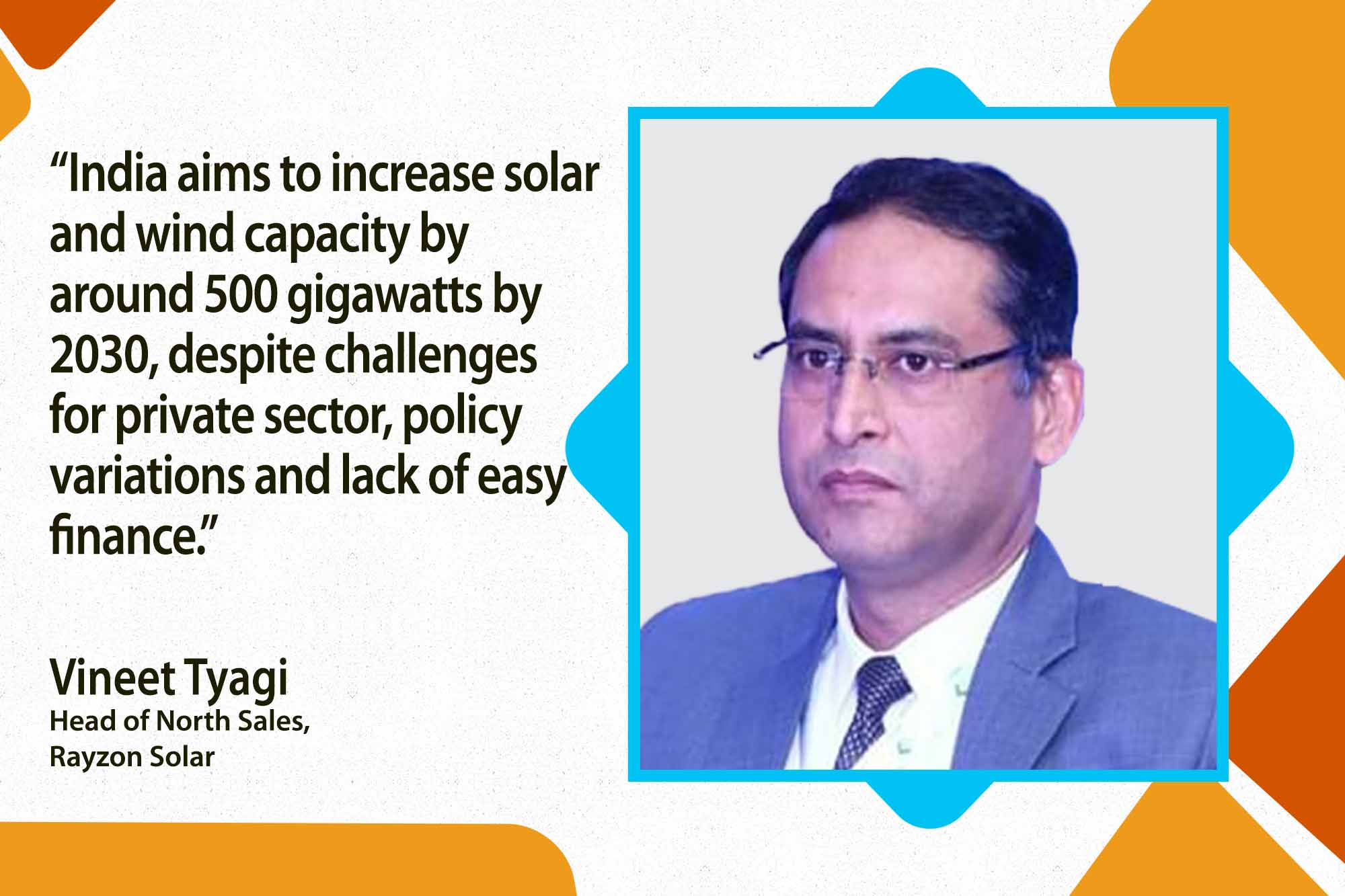Govt initiated policies spur 30-fold increase in power generation
By EPR Magazine Editorial February 2, 2024 2:22 pm IST
By EPR Magazine Editorial February 2, 2024 2:22 pm IST

India aims to increase solar and wind capacity by around 500 gigawatts by 2030, despite challenges for private sector, policy variations and lack of easy finance.
India presently boasts approximately 70 gigawatts of solar installation capacity, comprising 58 gigawatts from ground-mounted sources and 12 gigawatts from rooftops. Renewables contribute around 43 percent of the total capacity, totaling approximately 180 gigawatts. The ambitious 2030 targets include 500gigawatts from solar and wind, with solar alone aiming for 300 gigawatts. The government plans to annually tender 50 gigawatts of solar & wind until 2030, with 40 gigawatts from solar and 10 gigawatts from wind, necessitating robust policy frameworks for the next seven to eight years.
Policies boosting growth
Government-initiated policies have spurred a 30-fold increase in power generation from three gigawatts in 2014 to the current 80-70 gigawatts. While the private sector, buoyed by governmental support, has made strides, challenges persist in day-to-day operations. Issues range from customer awareness and Discom officials understanding to technical capability gaps. The PLI scheme, with a 24000 cr initiative, proves effective for major players but lacks micro, small, and medium enterprises (MSME) participation, necessitating policies tailored for larger industries.
The government’s imposition of 40 percentBasic Customs Duty (BCD) policies limiting solar module imports and sales aims to boost domestic manufacturing. Project developers leverage analytics and Point of Sale (POS) systems to optimise costs and ensure peak generation meets afternoon and evening demand. However, the implementation of the last year budget initiatives for gigawatt-hours of battery storage and solar systems awaits action, highlighting the importance of policy-backed execution.
Challenges and solutionsThe government’s endorsement of wind and solar hybrid systems aligns with their complementary nature. Rooftop implementations face challenges due to policy variations across states and state-specific issues, hindering commercial, industrial, and residential development. Enhanced financing accessibility, especially for residential properties, is crucial, necessitating policies promoting third-party financing models and encouraging soft loans from the Indian Renewable Energy Development Agency (IREDA) and banks.
The absence of a clear credit risk assessment mechanism for rooftop consumers poses a challenge, impacting investor confidence. The government should encourage IREDA and banks to provide soft loans to residential sectors, with Power Purchase Agreements (PPAs) between developers and roof owners minimising default risks. Policy frameworks must address generation fluctuations, peak-hour mismatches, and regional supply-demand imbalances, necessitating standardised transmission systems.
Recent policy uncertainties, such as the extension of the ALMM, deter investors, underscoring the need for consistent ground-level implementation for sustainable projects. Overcoming operational handicaps will pave the way for achieving the ambitious 500 gigawatt target in the near future.
Spokesperson: Vineet Tyagi, Head of North Sales- Rayzon Solar
We use cookies to personalize your experience. By continuing to visit this website you agree to our Terms & Conditions, Privacy Policy and Cookie Policy.